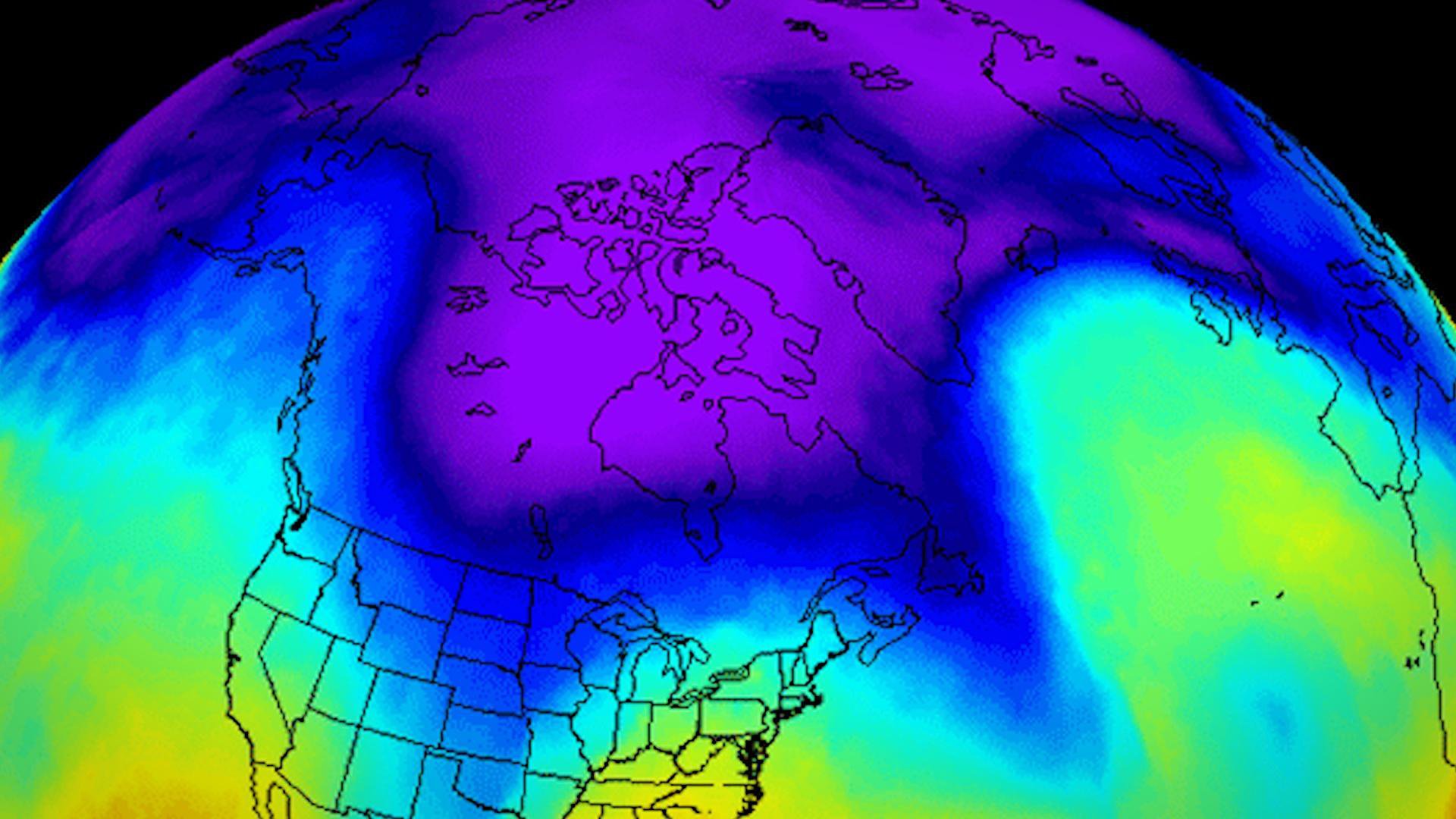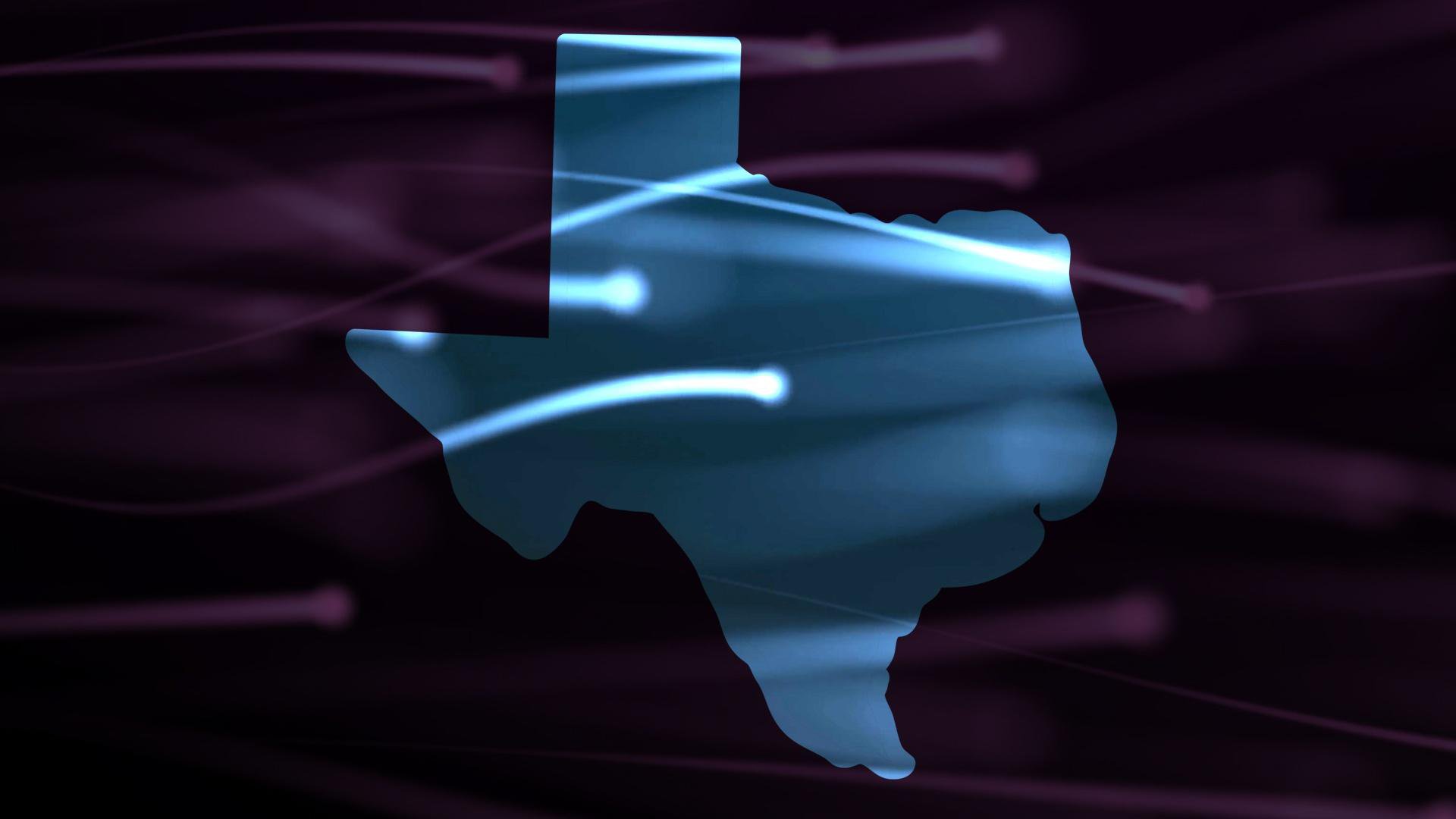Why Texas was not prepared for Winter Storm Uri
The February storm left dozens of Texans dead and millions without power—and exposed an aging energy grid unprepared for a changing climate. Can we build something better?

Ice and snow cover plants in the Texas Hill Country on February 15, 2021. Winter storm Uri brought historic cold weather, power outages, and traffic accidents to Texas as it swept across 26 states with a mix of freezing temperatures and precipitation. Image Credit: Sarika Khanwilkar
Imagine millions of people stranded in the cold without electricity, heat, or running water. Infrastructure has been crippled. Families are huddling for warmth in parked cars, and boiling water in their homes to ensure it is safe to drink. This may sound like the plot of a post-apocalyptic film, but it was very much a reality for millions of people across Texas last month.
The week of February 13-17, a record-setting winter storm named Uri engulfed the state of Texas and brought with it plunging temperatures.
Nearly 50% of Texas is powered by natural gas, 20% by coal, another 20% by wind and solar, and 10% by nuclear energy, according to the U.S. Energy Information Administration (EIA). With summer temperatures regularly soaring above 90 F, Texas energy systems safeguard against heat. The state’s power plants and natural gas system are not optimized for freezing conditions. Although Texas experienced a similar energy crisis 10 years ago, and investigations concluded that Texas energy producers needed to insulate and winterize their systems for extreme cold, most systems remain poorly insulated.
As weather conditions worsened and temperatures dropped in February, much of the state’s infrastructure for producing and delivering electricity simply froze, says Michael Webber, an energy resources professor at the University of Texas at Austin.
Webber notes that several coal plants turned off because of frozen equipment at the plants. Along with some snow-covered solar panels and frozen wind turbines, there were a series of outages throughout the system. These outages turned off electricity in different parts of the state, including sections of the natural gas system that are electrically operated, such as pumps and antifreeze injection systems. This led to the shutdown of even more power plants, producing a perfect storm of power failures.
All the while, Texas residents were turning up the heat, leading to a surge in demand.
As a result of the freezing conditions and rapid surge in energy usage, the state’s power grid began to malfunction, leading to cascading failures in the system and widespread blackouts. The infrastructure failure was then compounded by Texas' energy grid independence and lack of resilience, because most of Texas does not have the option of channeling energy from other states.
During the storm, at least 4.5 million electricity customers in Texas lost power, an estimated 57 people died due to hypothermia, and about 12 million people received “boil notices” because of water quality issues, the Texas Tribune reported.
“So we have a water problem—freezing water, become a gas problem, become a power problem, become a bigger gas problem, become a bigger power problem, become a water problem and a humanitarian crisis,” says Webber.

Nearly 12 million people in the state of Texas were told to boil tap water before consuming it after Winter Storm Uri caused power blackouts at water treatment facilities.
One resident who found herself without power for three nights was Harris County Judge Lina Hidalgo. Prior to the storm, Hidalgo warned her county’s nearly 5 million residents about the impending winter storm, but this did not spare her from the ferocity of the blizzard or the lack of preparation by utility companies.
“It’s worth asking the question: Who set up this system and who perpetuated it knowing that the right regulation was not in place?” Hidalgo told the Associated Press. “Those questions are going to have to be asked and I hope that changes will come. The community deserves answers.”
In the aftermath of the Texas energy crisis, many are asking questions. How did this happen? Who is to blame? What role did natural gas, coal, and renewable energy play in the crisis? And how can we prevent a similar disaster from happening again?
To answer these questions, one must understand America’s energy grid and how power is distributed.
When it comes to its grid, Texas is an island. In the United States, there are three grids: east, west and Texas. Texas has an independent grid, which allows it to be untethered by federal regulation, and unlike most other states, it can generate enough electricity within its borders to be self-sufficient.

A view of the ERCOT Grid Control Center at their headquarters in Taylor, TX. Controllers route electricity through over 37,000 circuit miles of high-voltage transmission wires, and serve 26 million energy customers in Texas. Image courtesy of the Electric Reliability Council of Texas (ERCOT)
However, this also means that if something goes wrong, the state has difficulty importing power from neighboring states, leaving infrastructure vulnerable should extreme weather events cripple the system, says Webber.
“So what happened in Texas, it’s not just about Texas,” says environmental engineer Greeshma Gadikota. “It’s about the need to rethink our energy infrastructure, the need to build in resilience in response to a changing climate in many, many different parts of the world. The risks 20, 30, 40 years ago are different from the risks that we face now.”
According to Webber, we’re building our infrastructure for yesterday’s weather, not tomorrow’s weather.
“The next hundred years will be different,” says Webber. “We know this, that the weather events will be more extreme and more frequent, which means hotter and colder, wetter and drier. So we have to deal with this and design for that.”
The role of renewable energy in the Texas energy crisis
As power started to come back online following the storm, false information began to circulate regarding renewable energy and its connection to the energy crisis, reports The Texas Tribune. Some even identified frozen wind turbines in West Texas as the root of the state’s energy supply problem. In reality, wind power makes up only a fraction of the energy generated during the winter in Texas.
“Texas is a gas state,” says Webber.
Yet, some misleadingly attributed the power outages to frozen wind turbines.
“This is what happens when you force the grid to rely in part on wind as a power source,” U.S. Rep. Dan Crenshaw, tweeted in mid-February. “When weather conditions get bad as they did this week, intermittent renewable energy like wind isn’t there when you need it.”
“We should never build another wind turbine in Texas,” read a Facebook post from Texas Agriculture Commissioner Sid Miller. “The experiment failed big time.”
However, malfunctions in natural gas, coal, and nuclear energy systems were to blame for nearly twice as many outages as frozen wind turbines and solar panels, stated the Electric Reliability Council of Texas (ERCOT), which runs the state’s power grid, during a press conference in February.
The world’s energy consumption is predicted to grow by 56% in the next 25 years, according to the U.S. Energy Information Administration (EIA). As the demand for energy swells, the stores of fossil fuels we currently depend on are dwindling and becoming more costly to obtain. The burning of these fossil fuels also discharges carbon, which has long-lasting negative effects on the environment—contributing to greenhouse gases that warm the planet and contribute to climate change.
With demand for energy swelling, the Texas energy crisis serves as a wake-up call which exposes “cascading failures” in the infrastructure of the U.S. electric system. It also reveals that these systems may not be ready to absorb the frenetic climate-related spikes in demand for power that Winter Storm Uri produced, reports NBC News.
“If the most energy-abundant region of the world can run short on energy, it can happen anywhere,” says Webber. “So climate science can be integrated into our energy planning to make the energy systems perform better. That’s what we need to do.”
As we continue to develop our renewable energy sources, electric grid regulators say the U.S. will need to develop vast supplies of power storage, such as gigantic batteries, which rely heavily on innovative technologies.
As we grow more dependent on infrastructure to remain resilient during extreme fluctuations in temperature and weather conditions, we have to prepare ourselves and educate students on how communities will need to develop different renewable energy sources and energy storage technologies to meet their unique needs and environmental contexts. One helpful resource is the NOVA Energy Lab, where students investigate what energy is, how it can be converted into useful forms, and why some sources are running low. It also allows students to compete to see whose renewable energy system designs can produce the most power. Below are examples of other NOVA resources that address these topics:

Build a better grid with energy resources from NOVA
The Energy Lab Interactive
Use scientific data to design renewable energy systems for cities across the U.S. in this interactive from the NOVA Energy Lab. In the research challenge, students investigate what energy is, how it can be converted into useful forms, and why some sources are running low. Students will also have the chance to compete with others to see whose designs can produce the most power.
Growing Appetites, Limited Resources
In this video from NOVA’s Energy Lab, learn about the growing demand for energy and the impacts of energy use. Currently, the majority of the world’s energy comes from fossil fuels, which are limited resources. The burning of fossil fuels releases carbon dioxide, a greenhouse gas that pollutes the atmosphere and affects Earth's climate. Share with your students how a sustainable future depends on finding alternative energy sources and developing new technologies that can support increasing energy demand and minimize environmental impacts.
Wind Power
In this video from NOVA’s Energy Lab, learn about the benefits and limitations of wind power technologies. Modern wind turbines transform wind energy into electrical energy by capturing wind to turn an electrical generator. Wind farms that produce electricity using wind turbines are environmentally friendly, but they are not yet in widespread use. Some of the issues that limit the potential of wind power include energy storage, location, and cost.
Search for the Super Battery | Comparing Grid Energy Storage Solutions
With the means to currently store just 2% of its generating capacity, the United States is searching for efficient and economical energy-storage solutions. Using this resource from NOVA: Search for the Super Battery, students can examine three different technologies to store energy from renewable or conventional power sources for later use on an electrical grid.
Toward A Smarter Grid
The infrastructure of the U.S. electric power grid is over 100 years old and ill-equipped to handle the increasing demand for electricity and new power sources. A smarter power grid with an automated system to monitor problems and control the distribution of electricity could make the grid more efficient, balance energy demands, and lower the cost of electricity. Using this resource, students will learn how upgrading the power grid could be a key step toward a sustainable energy future.
Deciding Your City’s Energy Future
In this interactive, students play the role of a director of the fictional Greenville Light & Power Department where they oversee the city’s power grid, the network of power lines and other equipment used to deliver electricity from suppliers to customers. Students must evaluate fossil fuel and renewable energy sources to decide which type of energy should be used to power the city’s electric grid in the coming decades as Greenville grows — evaluating the availability, cost, reliability, and environmental impact of different energy sources.



